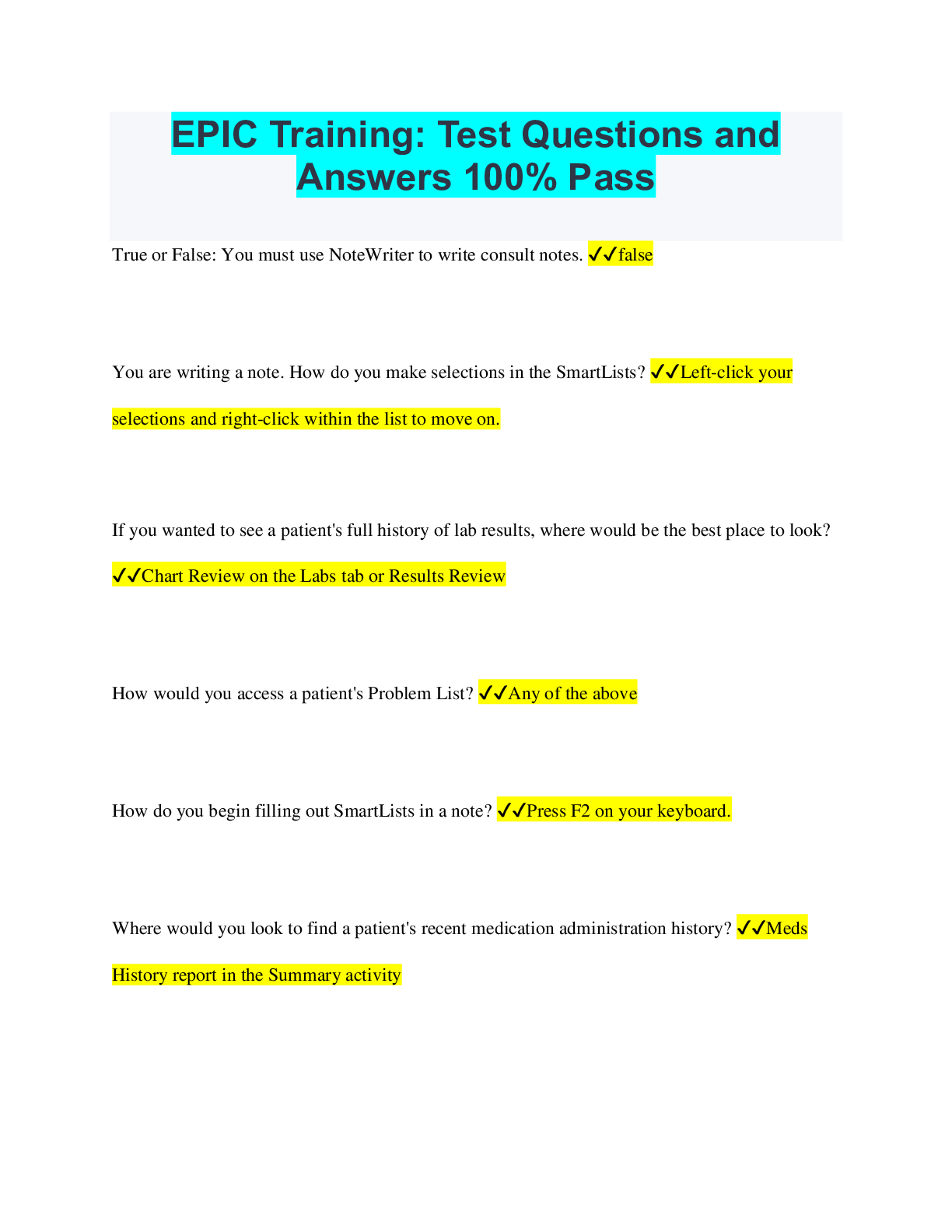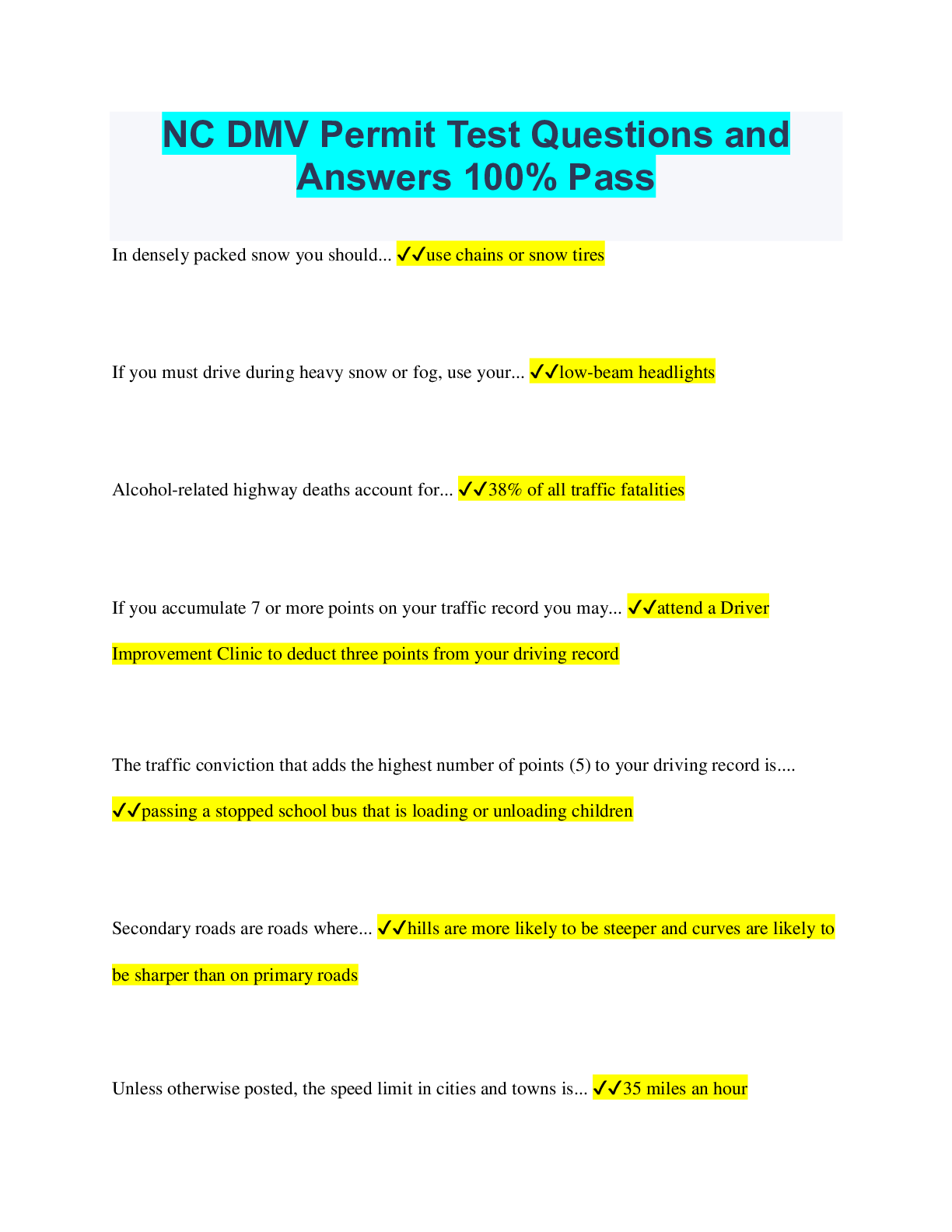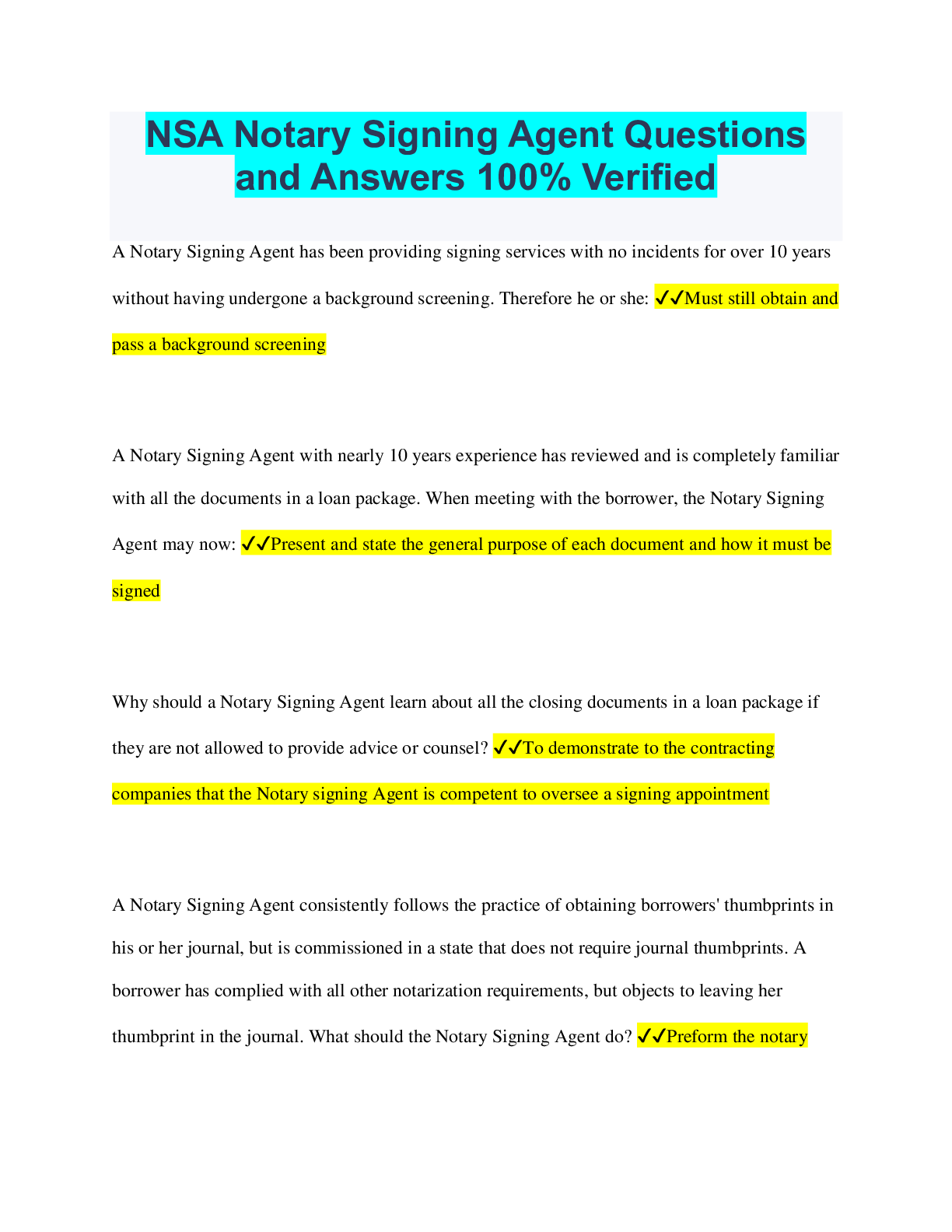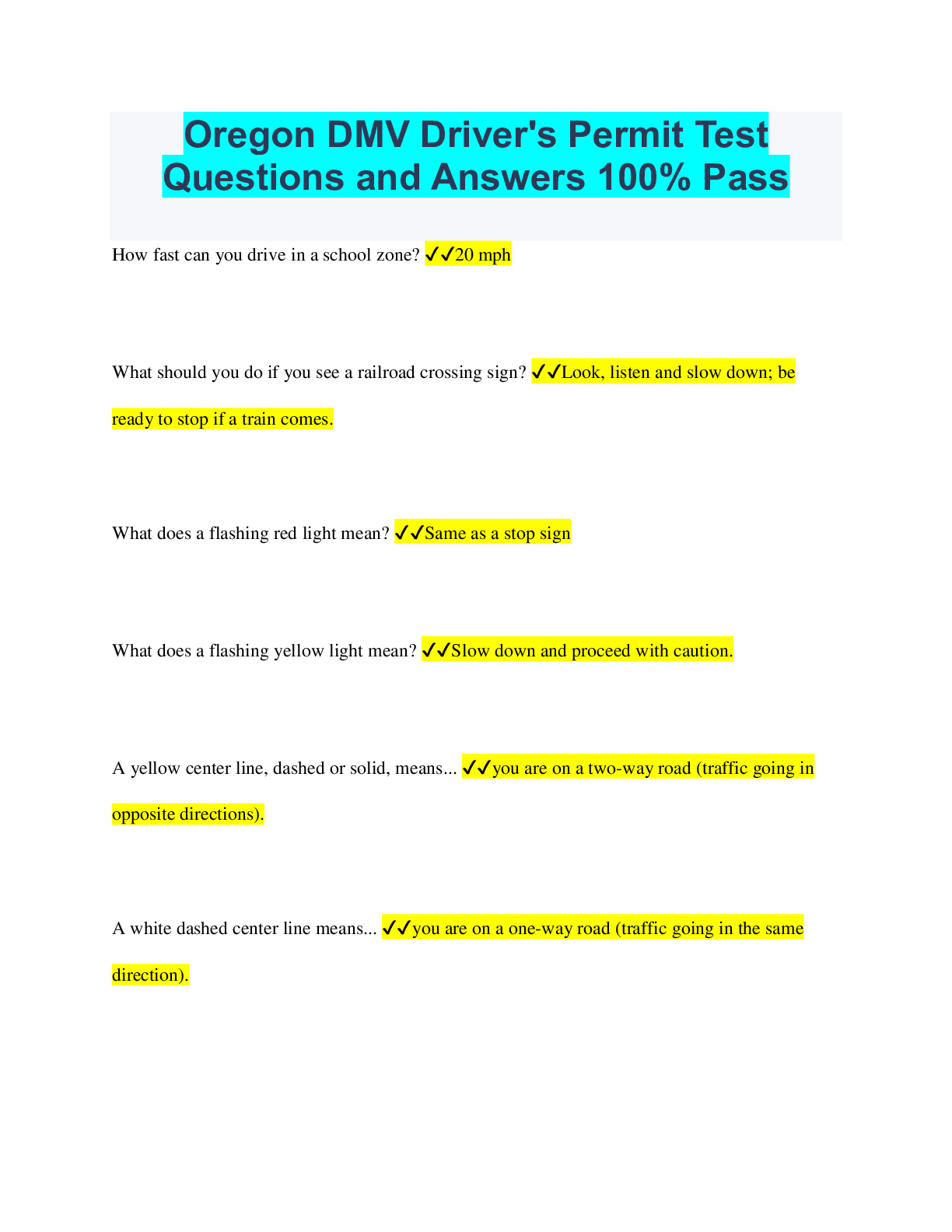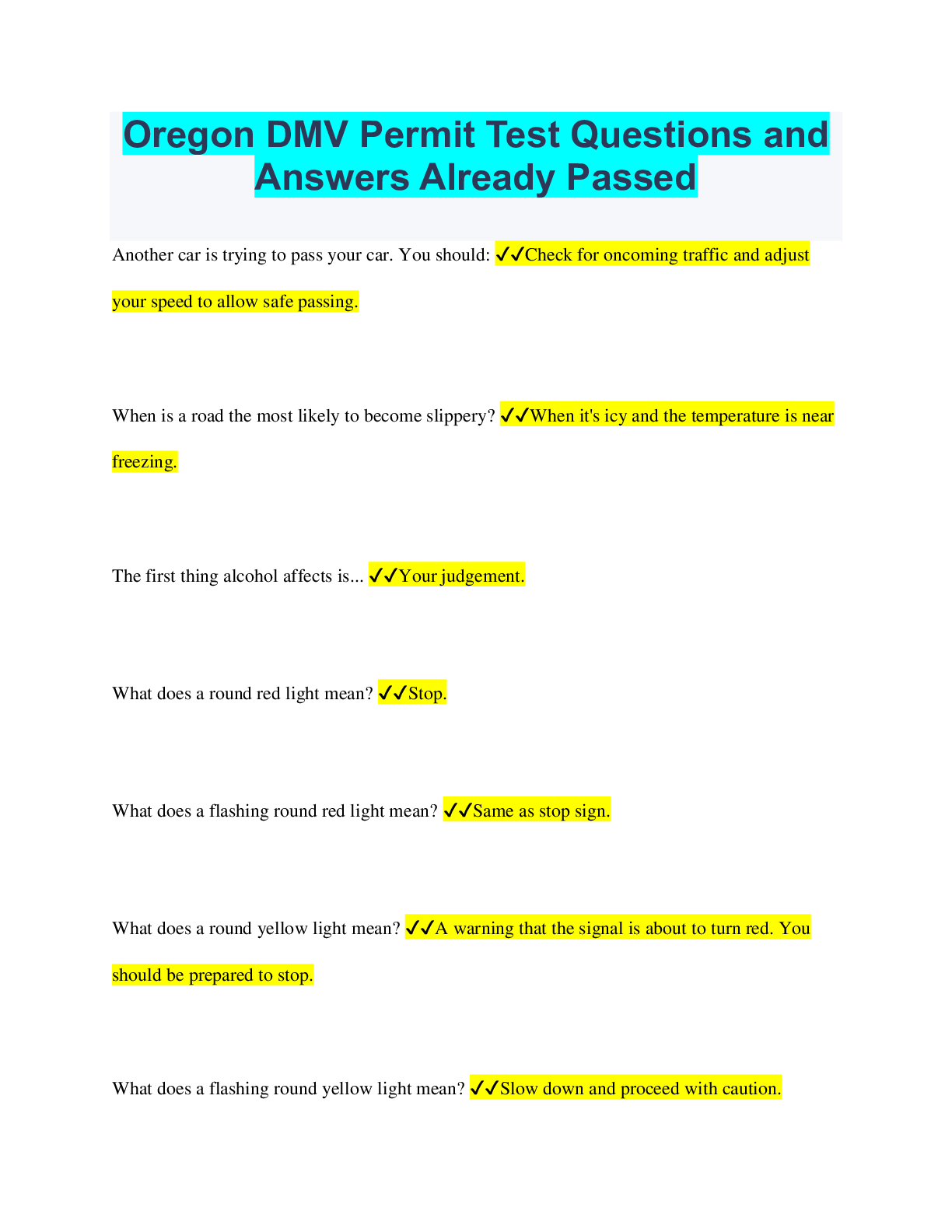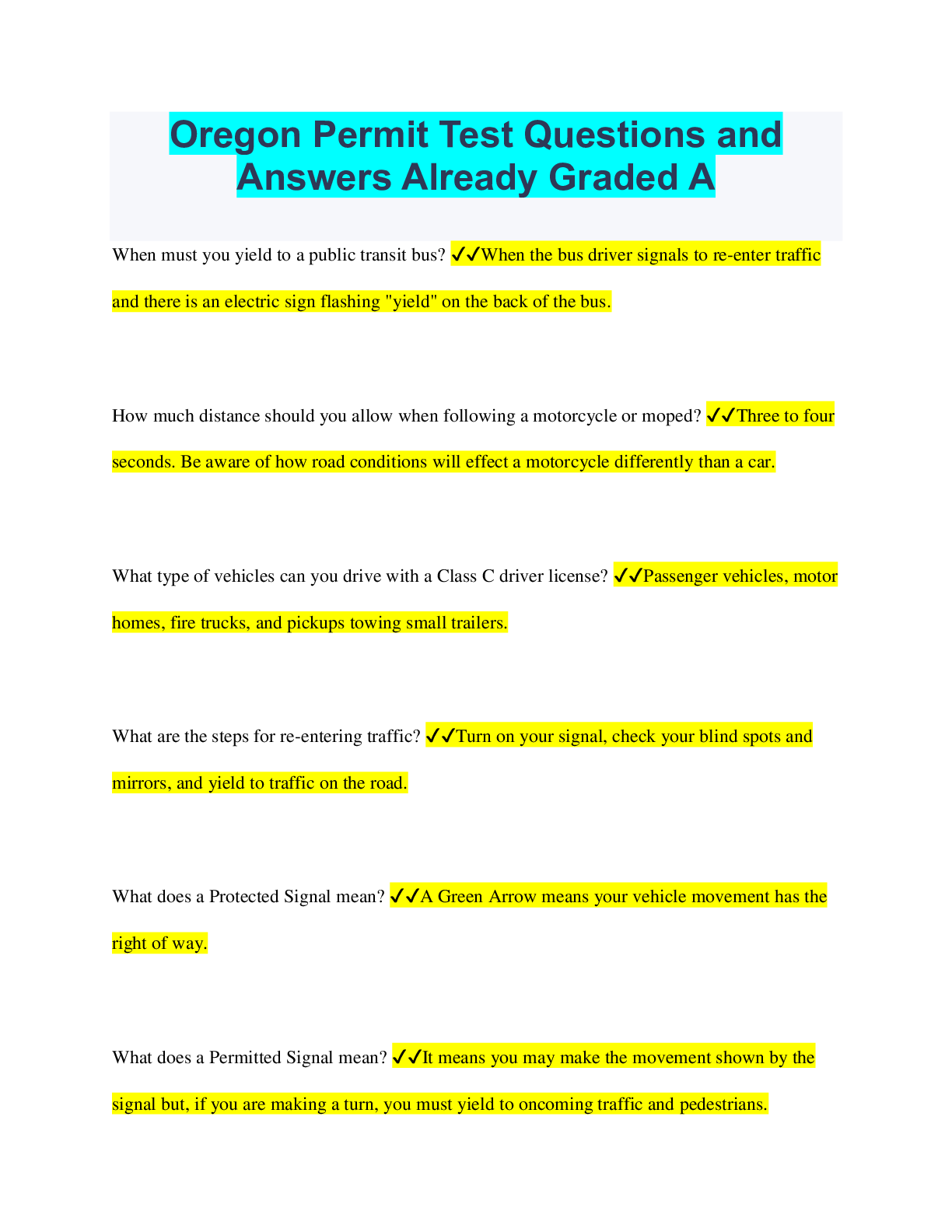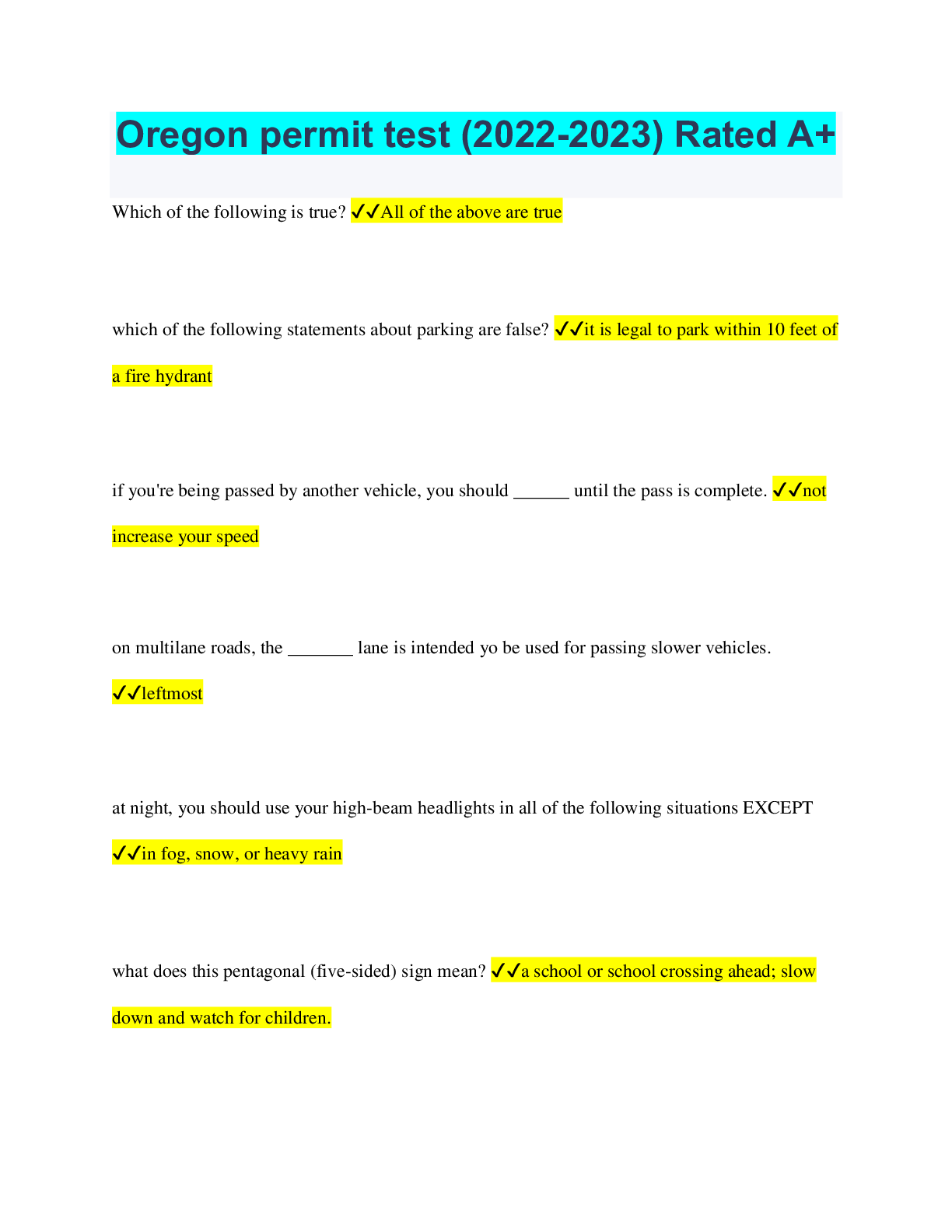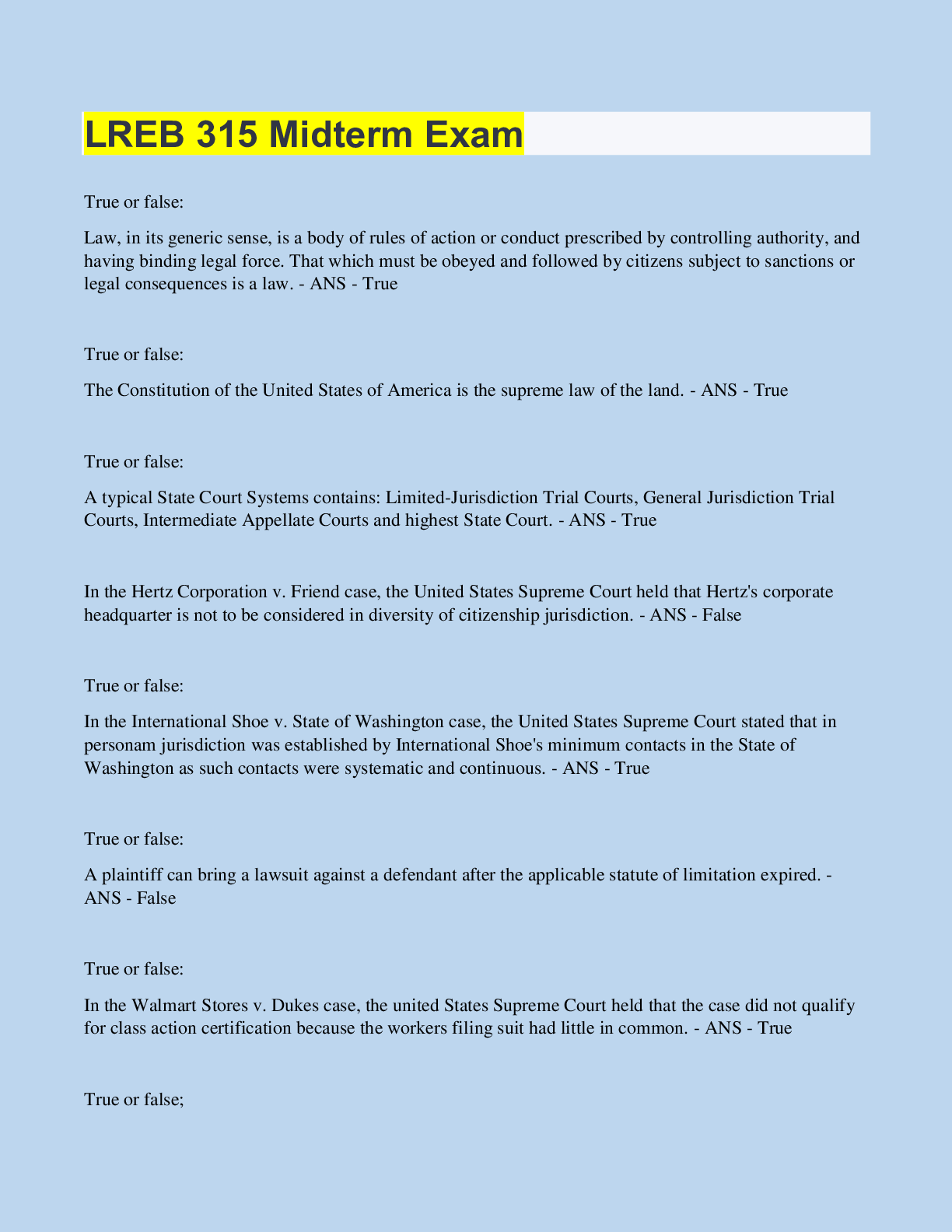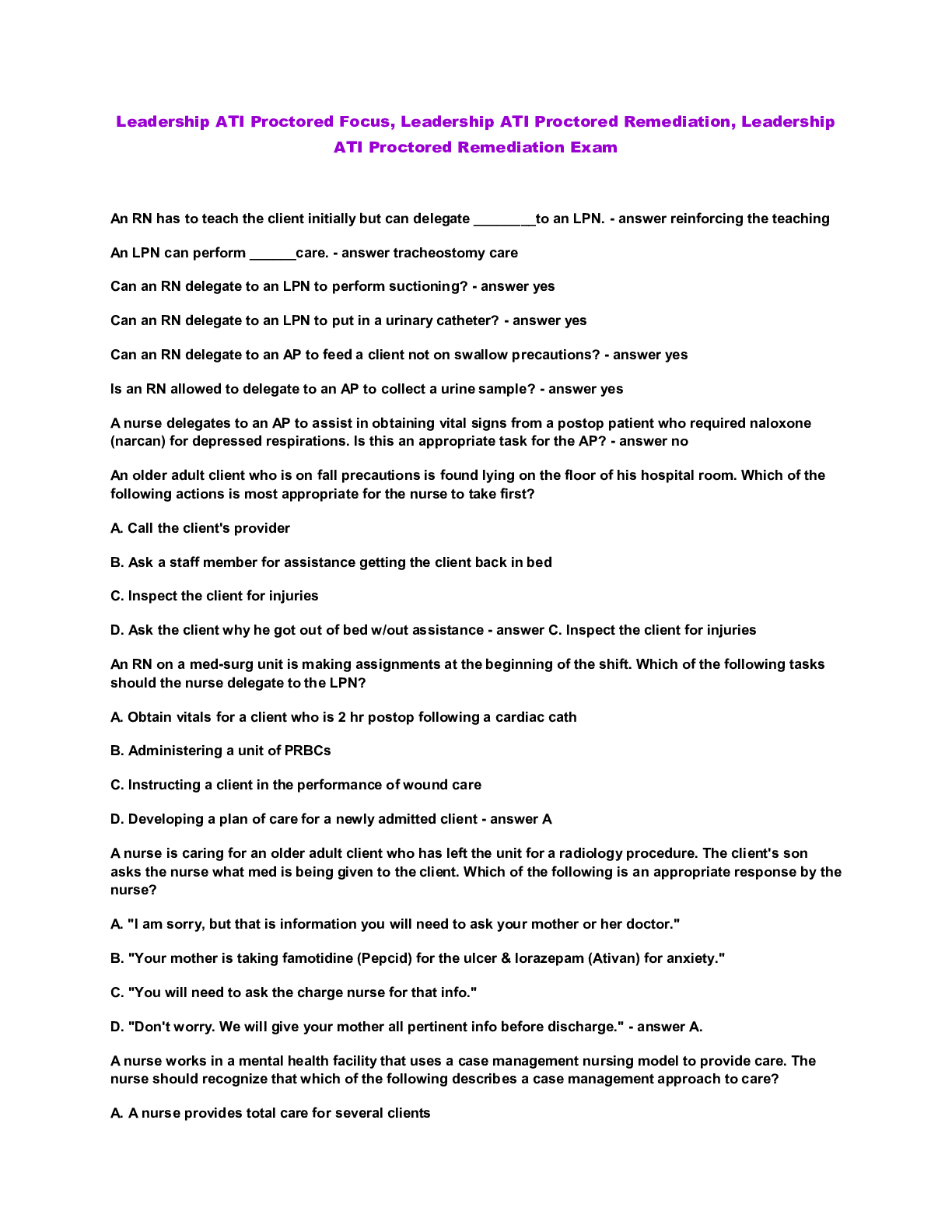*NURSING > QUESTIONS & ANSWERS > Leadership ATI Proctored Remediation Exam (All)
Leadership ATI Proctored Remediation Exam
Document Content and Description Below
Leadership ATI Proctored Remediation Exam Airway Management: Discharge Planning for Client Who Has Tracheostomy ✔✔1. The dust should be minimized in the clients home, take actions such as not shak... ing bedding with client present. 2. The client should receive trach care every 8 hours, including actions such as a fresh split‑gauze tracheostomy dressing. 3. The trach ties should need to be tied a square knot should be used and there should be one to two finger space between the neck and the tie. Chp 53 pg 318 Preoperative Nursing Care: Securing Client Belongings ✔✔1. The patient will need to remove valuables such as jewelry, dentures, glasses and prosthetics before surgery. 2. The first option for the patient's valuables is to leave them with family while they are in surgery. 3. The other option for the patient's valuables is to have the nurse safely store them before surgery. Chp 95 pg 640 Managing Client Care: Prioritizing Care for a Group of Clients ✔✔1. In prioritizing care for groups of clients, systemic needs should be prioritized over local. 2. Airway, oxygenation, circulation and potential for disability take priority over other needs (in that order). 3. Actual problems need to take priority in terms of care for groups of clients over potential future problems. Chp 1 pg 5 Managing Client Care: Prioritizing Nursing Care for a Group of Clients ✔✔1. Acute problems should take priority over chronic problems. 2. Urgent needs should take priority over non-urgent needs when prioritizing groups of clients. 3. Unstable findings should take priority over stable findings when prioritizing groups of clients Chp 1 pg 6 Professional Responsibilities: Obtaining Informed Consent in an Emergency ✔✔1. State laws regulate the guidelines for informed consent in emergency situations. 2. These state laws vary from state to state on how informed consent is obtained in an emergency. 3. It is the nurse's responsibility to know the state emergency informed consent laws in the state they practice in. Chp 3 pg 36 Information Technology: Receiving a Telephone Prescription ✔✔1. When receiving a telephone prescription the nurse must repeat the medication's name, dosage, time or interval, route, and any other pertinent information back to the provider. 2. The nurse could have another nurse listen to the telephone prescription as a safety precaution. 3. It is the responsibility of the nurse to make sure the provider signs (in person) the prescription within the time frame the facility requires which is usually 24 hours. Chp 5 pg 22 Pressure Ulcers, Wounds, and Wound Management: Assessing for Evidence of Healing ✔✔1. Red tissue in a open wound is a sign of healthy regeneration of tissue. 2. Black tissue in a open wound is a sign that healthy is being hindered and it this tissue needs to be removed. 3. Drainage can be the result of the healing process, however purulent drain or pageurosanguineous is the result of an infection and not a sign of healing. Chp 55 pg 330 Maintaining a Safe Environment: Infection Control ✔✔1. The purpose of infection control is to prevent cross-contamination of communicable organisms and health care-associated infections. 2. Sturdy, moisture-resistant bags need to be used for soiled items (double bagging is unnecessary and not cost-effective). 3. To prevent accidental needle-stick retractable needs, needles with capping mechanisms, needless syringes and IV tubing with needless connections should be used when appropriate. Chp 4 pg 54 Maintaining a Safe Environment: Assessing a Client's Home for Safety Hazards ✔✔1. The home should be assessed for items that could make the client trip such as throw rugs or loose carpet. 2. The nurse should assess the quality of steps and sidewalk to make sure they are in good repair. 3. The nurse should assess the home for a nonskid mat in the shower or tub to reduce falls. Chp 4 pg 60 Coordinating Client Care: Need for Variance Report ✔✔1. A Variance or Incident is an event that occurs outside the usual expected normal events or activities of the client's stay, unit functioning, or organizational processes. 2. Examples of when a variance report should be filed are medication errors, procedure/treatment errors, needle-stick injuries, client falls and more. 3. The report should be completed by the person who identified it as an unexpected event. 4. It is confidential and not shared with the client. 5. The purpose is to create a safer future environment for all. Chp 5 pg 69 Bacterial, Viral, Fungal, and Parasitic Infections: Evaluating Infection Control Precautions ✔✔1. For a client who is suspected to have pulmonary tuberculosis, measles or varicella airborne precautions should be implemented by the nurse. 2. Clostridium difficile, herpes simplex virus, impetigo, MRSA, VRSA are disease that would require contact precautions. 3. Hib, pertussis, mumps, rubella, plague, streptococcal pneumonia, meningococcal pneumonia are disease that the nurse would need to implement droplet precautions for. Chp 56 pg 339 [Show More]
Last updated: 2 years ago
Preview 1 out of 3 pages
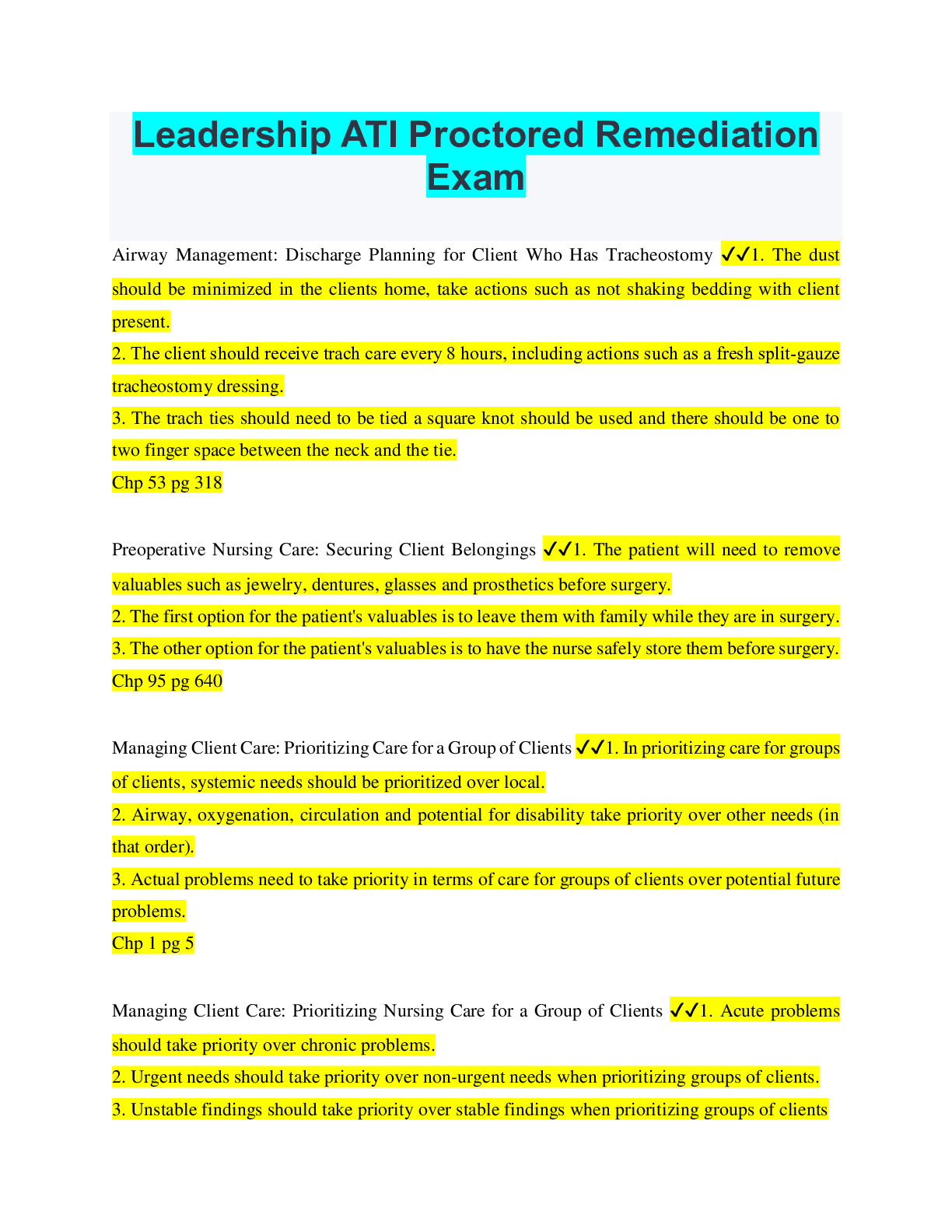
Buy this document to get the full access instantly
Instant Download Access after purchase
Buy NowInstant download
We Accept:

Reviews( 0 )
$7.00
Can't find what you want? Try our AI powered Search
Document information
Connected school, study & course
About the document
Uploaded On
Sep 22, 2022
Number of pages
3
Written in
Additional information
This document has been written for:
Uploaded
Sep 22, 2022
Downloads
0
Views
131
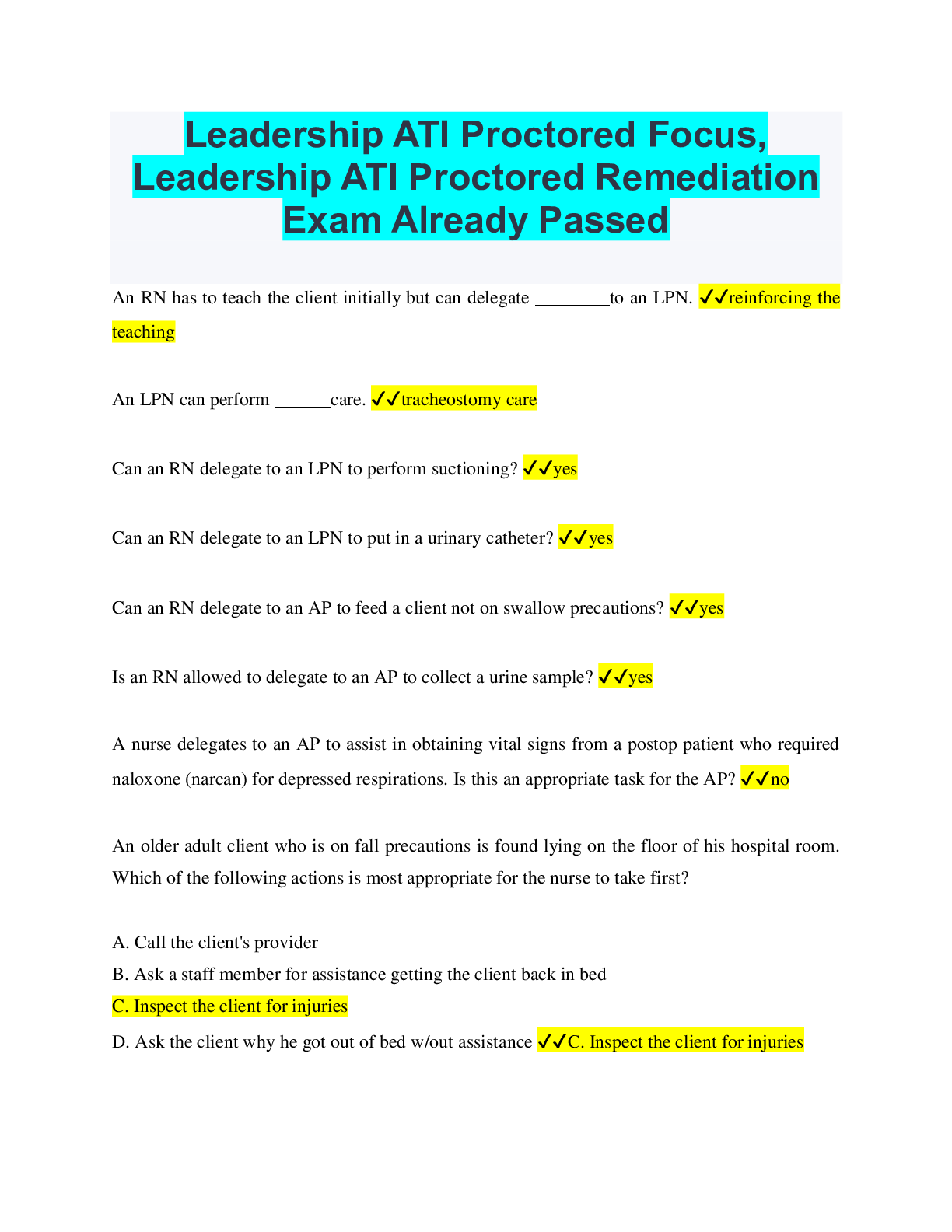

.png)


